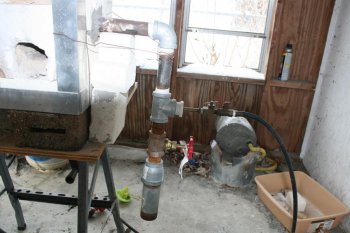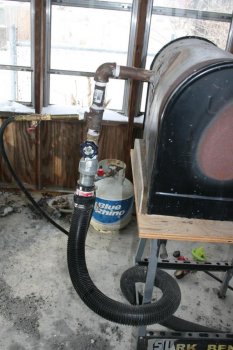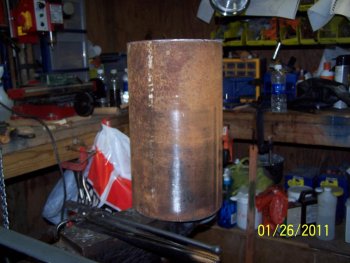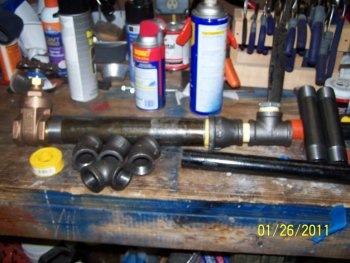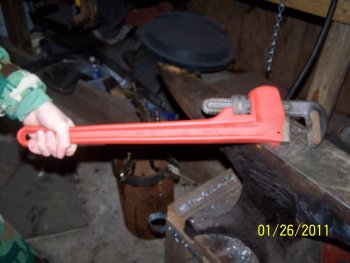McClellan Made Blades
Well-Known Member
Craig's correct about the pic I posted, the ONLY thing you cannot see is that the end of the pipe which goes into the forge has concentric pipes for the last 3"....the pipe itself is 1 1/2" ID, with a 3" piece of 1" inside of that, and then a 3" piece of 1/2" inside of that. About the only thing it does for the burner is cut down on the "roar", and creates a more stable flame pattern.
So the burner itself isn't filled with nipples, and fittings etc etc!?!? I was thinking the burner had all kinds of parts, or is that the venturi type burners that have tips and nipples? If I'm understanding this correctly, the pipe that goes to the forge is just a pipe with other pipes inside of them, with the gas attached back up the pipe a ways and the blower coming in from the rear. Do I have that right!??!? Because if I do I have yet again over complicated the simplest of things. The Burner set up that Ellis sells is just the pipes with shut off valves, and a connection for the gas? The pipe that enters the forge is just an open pipe? Guys, y'all are getting me excited, because I have yet to hear back from Darren Ellis, Tim Zowada or Larry Zoeller, either my business isn't important or their too busy for a couple hundered of my dollars, that isn't something that sets well with me. I work very hard for the few dollars I do have, and require the simplest of courtesy to spend those dollars with anyone. I understand that folks get busy and don't have time to check their email, what I don't understand is if they want to be in business why they don't have a phone number on their web site.
I'm going to draw up what I think is basic blown gas forge assembly probably copying what Ellis has on his site, I'll attach it to a post here and you all can tell me if I'm on the right track. I was thinking of using the black iron pipe from Lowes, I'm not sure of all the fittings they have for it, the connection for the gas is of considerable concern if they don't have one made for it, other than that, I do believe I can build this baby myself!
Ed the stepped down sizes of pipe you have on yours isn't a necessity, more of an improvement on the basic design? Also, what is the right ID sized pipe that should be used? And would starting it off at a larger ID and reducing it as it gets closer to the forge improve the pressure/performance? It works with water, except I don't think the distance is great enough with gas. Thanks so much EVERYONE,and I have to say a special Thank You to Ed, as you my friend have been advising me since I started this thread, and I truly hope others will learn from it. It will continue until I get this sucker built! I'm going to do some checking, the biggest thing I'm concerned with is the gas hook up, if I get that part figured out, I think I'll be in business! Thanks again, I can't thank y'all enough, you all don't know how much it means to me, to have this caliber of help in an area that I know nothing about. I'm not the traditional Southern boy that spent alot of time with Dad, learning all of the basic skills that Dad's teach, my dad was practically a war hero of the Korean War, he spent my entire life reliving the nightmare with undiagnosed PTSD, he didn't have the paitentce to teach much of anything, he worked, he slept, he drank (so he could sleep, without the dreams) sometimes he would eat an entire meal with me and Mom. But if there was every anything to fix, change the oil, wood working, anything like that, he hired someone to do it, he would never attempt to even wire a light switch. All that said, I'm basically self-taught with all the things that I can do, with the help of several folks along the way, everything I know I've had to go and learn it on my own, a lot of times from fine folks like you guys. That is why I say THANK YOU so often, I can never show everyone my true appreciation, but do know everything you guys do that helps me is so greatly appreciated. When I can hep you all with something I know, do know that I'll be there, Thank You So much!!! Rex


